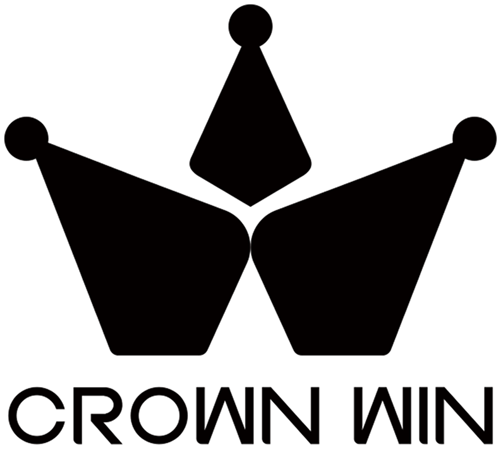
The coffee industry is on a surge never seen before with the world consumption of coffee surging to more than 166 million bags each year. But here is a shocking statistic that any roaster must be aware of: 72 percent of consumers base their buying choice on the look of the package alone in many cases in the first 90 seconds of encountering a product. In the current competitive coffee industry, people no longer see your packaging as a container, it is your unspoken salesperson, brand ambassador and freshness guardian all in one.

Proper coffee packaging has several life or death roles besides holding beans. It keeps the sensitive oils and compounds that make your coffee have a distinctive flavor profile, it conveys your brand story and values, and it makes the all-important first impression that can or can break a sale. You may be a small-batch roaster with your first product line, or an established brand looking to give your image a new look, but the choices you make regarding packaging will make a direct impact on how your coffee is going to last on the shelves and how customers perceive it, and, finally, your bottom line.
You will find out the main elements necessary to be included in any coffee package, make major decisions regarding the material and form type, explore the design techniques to create the brand loyalty, acquire the knowledge about the legal and sustainability issues, and acquire the experience to work with the suppliers. At the conclusion, you will have a full roadmap on how to create coffee packaging that does not only safeguard your product, but will also actively promote sales and create customer relationships that will be enduring.
Essential Components for Coffee Packaging
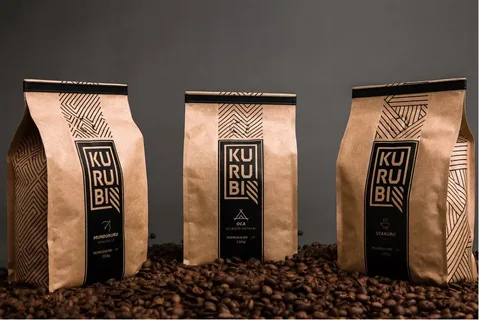
One-Way Valve: Your Freshness Guardian
One of the most important innovations in the coffee packaging technology is the degassing valve. Naturally freshly roasted coffee beans will release carbon dioxide a few days following roasting which may make ordinary sealed bags to burst or leak freshness. A good one way valve will allow the escaping of CO2 and the exclusion of oxygen that will help in keeping the package fresh without failure.
In the valves choice, pay attention to their location and quality. The premium valves must be placed out of the seams and possible areas of stress and good functionality without interfering with the structural integrity of the package. The valve is also used as a customer interaction device several coffee enthusiasts would love the process of applying force on the valve by pressing it lightly to inhale the aroma of the coffee before buying the coffee.
Resealable Features That Enhance User Experience
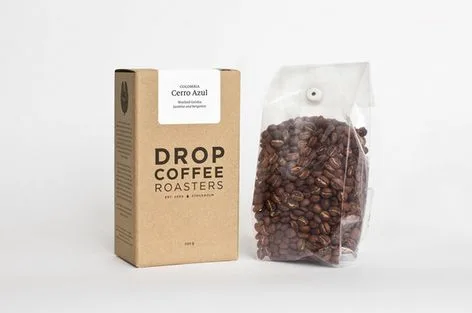
The contemporary consumers of coffee prefer convenience and maintaining of freshness after the first opening. Re-closable functions such as zip-lock seals, tin ties, or fold-over tabs with strips of adhesive tapes can have a great influence on customer satisfaction and rebuys. The features take specific significance in terms of larger sized bags where the consumers can take weeks to consume the product.
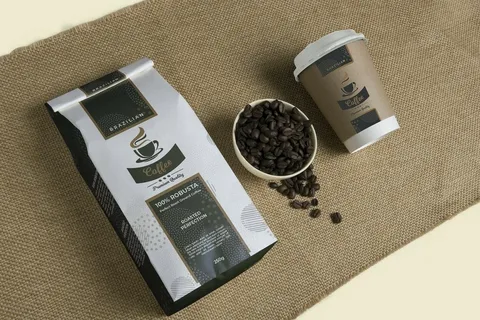
Take into account the user experience when choosing resealable alternatives. Closures, which are airtight such as zip-locking, need to be made very accurately. Tin ties are more artisanal and less airtight but are cheaper. Fold over adhesive tabs represent a balance, providing decent freshness shield and clean appearance.
Legal and Regulatory Requirements
The Comppliance is not a luxury, but a prerequisite to the market and consumer confidence. Other key labeling standards are net weight, roast date or best-by date, country of origin, contact details of roaster and any certification or warnings. Regional needs differ widely and therefore, it is important to conduct extensive research about local laws before designing.
Strategic labeling is in addition to plain compliance, and it helps to establish credibility and premium positioning. Specific farm or cooperative names, detailed information on the origin, processing techniques, and altitude are indications of quality and transparency. Roast date prominence is the quality-consciousness that has become a quality indicator that educated consumers actively pursue and is thus a competitive differentiator.
Material and Barrier Protection

The enemies of coffee are oxygen, moisture, light, and heat and your packaging materials should be able to offer maximum protection against these four. Combining the aluminum barriers with the food-safe plastics in multi-layers films are a very good option to offer the premium products with the highest level of protection whereas the kraft paper with internal barriers is an environmentally-friendly choice and would attract consumers with a sense of sustainability.
There is a trade-off that enables the selection of materials based on protection, sustainability, cost, and brand image. Completely recyclable alternatives can be a bit less effective at the barrier level yet can be more in line with the current environmental awareness. Foils with premium lines can offer the ultimate in keeping products fresh as they have high-end products and the customers would demand a long shelf life and optimum preserving of the flavor.
Key Decisions You’ll Face When Choosing Packaging

Bag Style and Format Selection
The type of packaging used has a great influence on shelf presence, functionality and cost of production. Gusseted bottoms and stand-up pouches provide a lot of shelf stability and provide as much space as possible to the brand, so they are a good solution in a retail setting. Flat-bottom bags offer high quality of garb and maximum use of space during delivery and storage.
Flat pouches are suitable in small amounts or sample sizes and are economical in costs and can be shipped in a compact manner. Other options such as metal tins, glass jars or rigid boxes can differentiate the high-quality products, however, they usually have the minimum order and higher unit costs. When choosing formats, consider your target market, price point and distribution channels.

Material Types and Finishing Options
The choice of materials has a significant influence on functionality and the brand perception. The packaging of Kraft paper gives a crafted, sustainable effect that appeals to the eco-friendly consumers. A modern sophisticated feel is offered by matte laminate films; this is printable, and it is also designed to be used in premium positioning.
Metallic films provide the greatest barrier protection and give visual appeal to the shelves especially to brash, modern brands. Compostable and biodegradable are gaining significance as sustainability is emerging as a key driver of purchasing behavior. The various types of material used have varying printing capabilities, thus coordinate material choice against design requirements at the very beginning of the process.
Size Strategy and Market Positioning
The size of packages has a direct influence on customer acquisition, retention and profitability. Sample sizes (2-4 oz) are low-risk trial methods that can help to convert new customers. The standard retail sizes (8-12 oz) balance convenience and value perception and bulk (2-5 lb) appeal to the serious coffee fan and lower the unit packaging cost.
Think of having various sizes to attract the varied customer segment and application events. Smaller sizes are effective in gift sets and high-end one origin, whereas larger sizes are ideal in the case of daily coffee consumers who are value conscious. The choice of your size strategy must be congruent with distribution channels: specialty coffee shops might be interested in smaller sizes, but a grocery store might be interested in larger, more value-driven sizes.
Manufacturer and Supplier Considerations
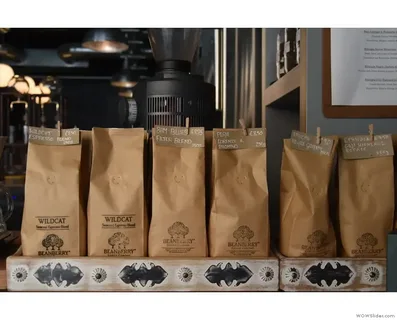
The choice of suppliers affects all the features of your packaging, including low costs and high-quality, and constant quality and prompt delivery. Assess the prospective partners according to the minimum order quantities, lead times, quality control measures, and proofing. Suppliers with lower MOQ may be of interest in small roasters, whereas cost-effectiveness and ability to scale the operation fast may be important in large operations.
Ask questions of other projects of the same nature requesting samples of those projects and inquire about their printing abilities, color matching and quality control measures. Initial communication protocols and expectations need to be set. Take into consideration geographic proximity in order to communicate better and possibly pay less when shipping goods, but do not sacrifice quality to convenience.
Design Tips: Creating Packaging That Sells and Builds Brand Identity

Clear Brand Messaging and Differentiation
Your wine package needs to deliver your brand uniqueness value proposition in a matter of seconds. Have a strict hierarchy in your messages, the name of your brand and the main differentiator must be seen at once with supplemental information to support your branding. Be it your strength of direct trade relations, special roasting methods, local community association, etc. – feature it.
Do not use rubbishy designs, which water down your message. Every detail on your package is meant to portray a particular meaning of quality, source, or brand values. Think about the way in which your packaging will be displayed individually and also as a product line- consistency creates brand recognition whilst giving the opportunity to vary in certain product expression.
Coffee-Specific Information That Adds Value
Coffee consumers are educated, and this needs more information that enables them to know what they are buying. Transparency of roast dates has turned into a quality measure – place it in an eminent position, easily accessible. Add certain source details, elevation, processing technique and tasting notes that can make the customers know about the unique aspects of the coffee.
Brewing recommendations or optimum grind settings are worth consideration and also reveals expertise. QR codes have an opportunity to be connected with longer information about the farm, roasting process, or brewing instructions, which will leave a chance of engaging with the code even after the first purchase. The extra information makes your package more than mere container, but a tool to be learned by.
Visual Design That Captures Attention
Color psychology is very important in the effectiveness of coffee packaging. Natural and organic is advised with earth tones, vibrancy and modernity with bold colors. When choosing color palettes, also take into consideration your target demographic and positioning, high-quality products can use sophisticated and more subdued colors, whereas the mass-market products might need brighter and more eye-catching solutions.
Typography must be between legibility and character. Sans-serif fonts tend to be viewed as modern and clean whereas serif fonts may be regarded as traditional and homemade. Make sure that important data is readable at different sizes and distances. Your brand story should be backed by imagery, be it the origin farms that you roast, or the lifestyle associations that your target consumers associate with.
Sustainability as Competitive Advantage
Green awareness is starting to have an impact on the buying behavior, especially among the youthful demographics. Make sustainable packaging options clear via relevant certifications, material callouts as well as disposal guidelines. Nevertheless, do not greenwash – make sure that your sustainability assertions are real and can be proven.
THINK about the entire lifecycle of what you package. Materials that can be completely recycled might also be associated with increased costs in the environmental costs of production but can provide superior end-of-life results. The use of compostable alternatives is also attractive to the environmental friendly consumer but could be weak in terms of barrier protection. Sustainability goals in balancing between product protection needs and sustainability goals and being open on trade-offs.
Legal, Compliance, and Sustainability Considerations
Regulatory Compliance Across Markets
The packaging laws in different regions are quite different and keep on changing. FDA regulations are used to control food packaging safety, and labeling in the United States. European markets have stringent requirements on claims relating to recyclability and chemical migration out of packaging material. Shipments between countries also bring about new challenges with importing requirements and labeling requirements.
Keep track of evolving regulations, especially on sustainability claims and recycling signs. What may be acceptable in a market, may be prohibited in another. When launching in a multi-market, think of using regulatory consultants, and never make assumptions based on what will be the same in different markets or different eras.
Environmental Impact and Consumer Expectations
The current consumers are becoming more and more brand conscious in terms of environmental responsibility. A choice of packaging has a profound effect on the sustainability profile of your brand and attracts environmental customers. When selecting packaging, consider material sourcing, energy requirements in production, transportation effects, and disposal of the end of life.
Demonstrate transparently what you commit to the environment without exaggerations. Give definite details on how to recycle, compost, and give directions on discarding. You can also consider collaborating with environmental groups or certification standards that will lend your sustainability efforts, but also contribute to the improvement of the entire industry.
Certifications That Add Value and Credibility
Third-party certifications can be used to distinguish your products and demand a high price. Organic, Fair Trade, Rainforest Alliance, and Direct Trade are some of the certifications that attract values-oriented consumers who are ready to pay a higher price to products that concur with their values. Have certification logos in place and licensed.
Studies that will identify the most effective certifications to your target customers. There are those markets where the environmental certifications are important, and the others are those that are socially oriented through the social impact or quality indicators. There are several different options of certifications that can be used to reinforce positioning, however, they might lead to a visual clutter, thus focusing on the customer research and brand strategy is important.
Finding and Working With a Supplier
Sourcing Credible Packaging Partners
Determine potential suppliers using industry trade show, online directories and other referrals made by other roasters. Assess applicants according to the experience in the field, especially working on the food packaging and small to medium production batches. Ask the clients to provide references and samples of the same types of projects in order to estimate quality standards and reliability.
Go between local and foreign suppliers and compare the cost savings, but the communication issues, transportation time, and the quality management issues. Other roasters have been inclined to local suppliers to collaborate more as well as to have shorter turnaround times whereas others have been impressed by the cost benefits of overseas production. Assess depending on your priorities and risk tolerance.
Essential Questions for Supplier Evaluation
Inquire on the level of minimum quantities to be ordered, time taken between approvals and delivery, cost structure in terms of set-up costs and delivery costs. Know how they prove their work, the number of rounds they use, the degrees of formats, and ensure that the color is accurate. Ask about quality control practices and their policy concerning defective product.
Talk about their growth potentials, do they grow in tandem with your business and what can they do when it comes to rush orders or seasonal volume additions. Know payment conditions, holding stock, and their experience with any special needs that you might have such as custom sizes or special materials.
Managing Costs While Maintaining Quality
Manage both your brand ambitions and real budgets. Expensive materials and elaborate printing processes may have a major effect on per unit costs especially when quantity runs are small. Think incremental solutions- start with the less expensive solutions and develop volume to support premium upgrades in the future.
Assess overall cost of ownership, shipping, warehouse and possible overordering waste. There are suppliers who provide inventory management services with the ability of minimizing your carrying cost and at the same time making its products available. Plan order quantities and timing taking into account seasonal order scheduling and the consequences of cash flows.
Practical Examples and Case Studies
Effective coffee packaging will display a clear positioning of the brand and will also meet the functional needs. High-end specialty roasters tend to have simple color schemes with high-quality finishes such as matte-finished kraft paper, focusing on the origin and roaster experience. The designs are targeted to the educated consumer who will be ready to pay more in quality and authenticity.
The mass-market success stories are often characterised by bold graphics, definite value propositions, and recognisible graphics that provide a feeling of immediate recognition and trust. These designs are focused on shelf impact and wide appeal rather than positioning niche. The point of difference is in the realization of the priorities of target customers and designing.
Before and after redesign case studies bring out general patterns of improvement. Cluttered layouts are simplified, enhanced information hierarchy, and the brand identity is consolidated in a number of successful redesigns. More sales are often associated with a better value articulation and not mere aesthetic enhancements. The most powerful changes are those that deal with particular customer issues or market positioning issues.
Actionable Checklist for Coffee Packaging Success
Essential Components Verification:
- One-way degassing valve correctly fitted and in operation.
- Good resealable closure that suits the package size and use by customers.
- Full legal conformity such as weight, origin, contacts and dates.
- Barrier Protection Adequate barrier protection against intended shelf life and storage conditions.
Design and Branding Elements:
- Well-defined brand hierarchy and big logo and essential messages.
- Extensive coffee details such as date of roast, origin and tasting notes.
- Graphical layout that indicates the brand positioning and attracts the target customers.
- Sustainability characteristics evidently expressed and certified appropriately.
Supplier and Production Management:
- Well-vetted and relevant experience and capacity of supplier.
- Good knowledge of MOQs, lead times and cost structures.
- Installed quality control and proofing procedures.
- Volume contingency planning and seasonal contingency planning.
Common Pitfalls to Avoid:
- Being too dramatic through excessive messages or graphics.
- Taking the lead times as underestimates on first production and reorders.
- Making decisions on materials only on the basis of cost and not considering the brand influence.
- Failing to consider by testing packaging on real customers prior to complete production.
Conclusion
Good coffee packaging is the meeting of science, art, and commerce- ensuring the quality of the product and conveying the brand values and making a purchase decision. Each of the material choice to color psychology helps your coffee to succeed and satisfy the customers in the market. This approach to smart packaging design and high-quality materials already yields returns in the form of a better brand image, customer retention, and, finally, long-term business development.
Think of packaging as an investment rather than a cost that is needed in order to present your brand rather than a tool of marketing which works 24/7 to turn prospects into customers. Begin by being clear on your target customer and brand position and take decisions that are made in packaging that will always build on these pillars. Pilot your designs on actual customers, take their opinion with retail partners and keep improving your formula depending on the market reaction and business development.
